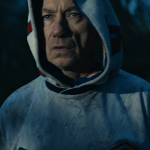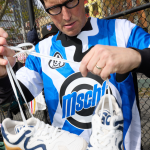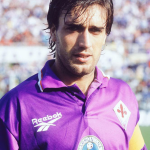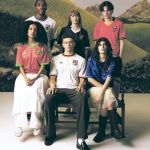
When commercial and technical sponsors align
From Blackburn Rovers with Lonsdale to Celtic with Umbro
December 22nd, 2023
Almost all football teams have both a commercial sponsor and a technical sponsor: although the technical sponsor (the supplier) determines the look of the uniforms - thanks to templates and the classification of clubs into tiers - the commercial sponsor is also very important from this point of view. Pirelli for Inter, PSV Eindhoven and Philips, Bayern Munich and Deutsche Telekom, Liverpool and Carlsberg, Schalke 04 and Gazprom are just a few examples of decades-long partnerships that have shaped a significant part of the aesthetic identity of these teams. In terms of aesthetics, there are also examples of teams adopting the same commercial and technical sponsor for one or more seasons. From the mid-'90s to the mid-2000s, it was a fairly common practice, but there are also rare cases that precede or follow this time frame. It's worth noting that double sponsorship usually involves suppliers contributing significantly larger amounts to the clubs' coffers compared to the classic "single" sponsorship.
Celtic with Umbro
Among the most famous is the experience of Umbro with Celtic, lasting only two seasons (1997/1998 and 1998/1999). Although there isn't much information available about the origin of the Celtic's double sponsorship, we can imagine that the Scottish club had to settle for using Umbro as a commercial sponsor as well - which certainly paid a substantial amount to have its logo appear in two areas of the shirt - as 1997/1998 marked an important transition period for the Hoops. In 1984/1985, the club agreed to feature a commercial sponsor for the first time in its history: CR Smith, a company specializing in glass door sponsorships that also sponsored arch-rivals Rangers, remained on the Hoops' shirt until 12 years later. The sudden end of the sponsorship with CR Smith did not give the club enough time to find another sponsor, leading to the refuge in the double sponsorship with Umbro, which became iconic in its own way. During the summer tour matches in 1997, the team even took the field without any sponsor: the central area of the shirt displayed the text "Celtic F.C.".
Blackburn and Bolton's Record with Reebok
There are many other fascinating examples of "double" sponsorships. Moving to the Premier League, Norwich used the double Asics logo from 1989 to 1992: three consecutive seasons make it a quite memorable double sponsorship. The additional peculiarity was that, for three years in the top division, Norwich did not significantly change the design of its uniform. Staying in England, we can come across other interesting examples of double sponsorship: Blackburn Rovers, exclusively during the 2005/2006 season, sported the double Lonsdale logo, while the agreement between Bolton Wanderers and Reebok is undoubtedly one of the longest double sponsorships ever, lasting from 1999/2000 to 2008/2009. One of the most incredible features of that kit was the possibility of even seeing three Rebook logos: the white home jersey with the two printed logos allowed the logo on the base layer worn by some players to show through.
Udinese 2008/2009 with Totò Di Natale
In Serie A, the main team that comes to mind when recalling double sponsorship is Udinese with Totò Di Natale. The Lotto sponsor appeared in double version on the home and third jerseys during the 2008/2009 season. Only in some cases does double sponsorship result in a decent aesthetic outcome: this depends on the fact that logos do not always create a harmonious balance on the front of the shirt. Today, top clubs no longer adopt double sponsorship, a practice that has fallen out of use, obviously due to financial reasons: clubs - rightly so - prefer to earn sums of money, small or large, by applying one or more sponsors to different areas of the playing kit.


























